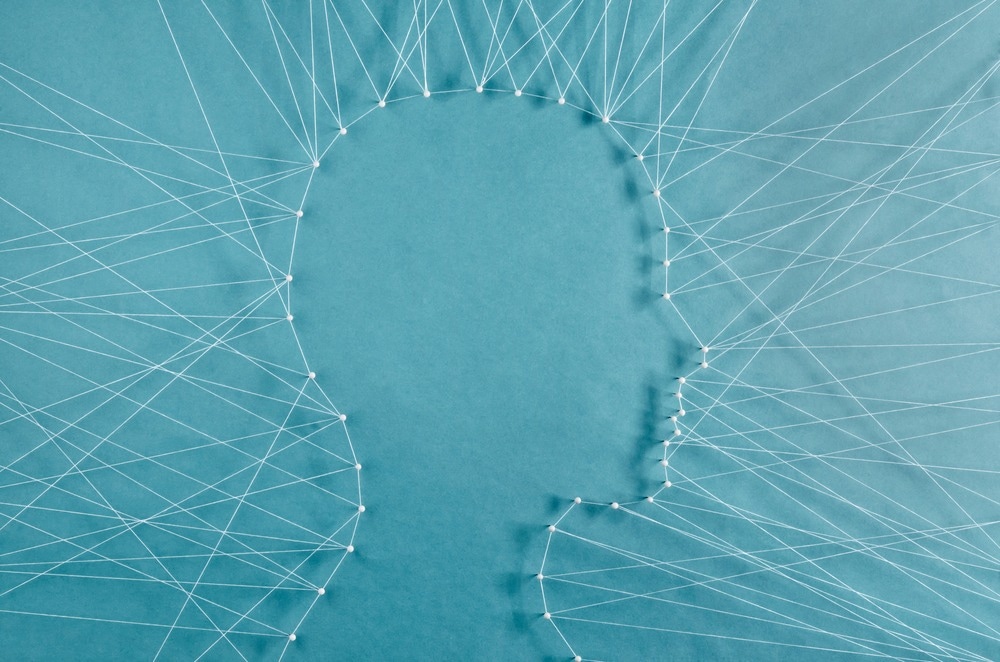 Interview conducted by Danielle Ellis, B.Sc.Jun 12 2024
Interview conducted by Danielle Ellis, B.Sc.Jun 12 2024In this interview Mark Bear, the Picower Professor of Neuroscience at MIT, delves into his pioneering work that has transformed our understanding of how experiences shape the brain.
Please could you introduce yourself and give us a brief overview of your personal journey in neuroscience?
I am Mark Bear, Picower Professor of Neuroscience at MIT. My personal journey in neuroscience began 61 years ago, on November 22, 1963, the day that President John F. Kennedy was shot in Dallas. As the news of the shooting in Dallas broke, initially, it was reported that he had been struck in the head and rushed to the hospital. In the absence of any more information on the outcome, there was speculation on the TV about what functions would be lost if the brain was damaged. I was gobsmacked. Thus began, at age 6, my lifelong interest in the brain.
I studied psychology in the 1970s as an undergraduate at Duke University, where I finally had the opportunity to study brains in Professor Irving Diamond's laboratory. Under his direction, I did experiments that led to the discovery of a previously uncharted neural pathway. I was surprised and exhilarated to learn that despite libraries full of books about the brain, there were still such fundamental discoveries left to be made. I, therefore, set my course to study neurobiology in graduate school at Brown University under the mentorship of Professor Ford Ebner.
The hot topic in neuroscience then was brain "plasticity," and a particularly compelling example was what occurs in the visual cortex after temporary deprivation of vision in one eye during early postnatal life. Hubel and Wiesel had shown that brief monocular deprivation in young kittens has a profound effect on the structure and function of the visual cortex, resulting in a severe impairment in vision through the eye that had been deprived. Not only was this a useful paradigm to study brain plasticity, it also provided an animal model for a common cause of visual impairment in children, called amblyopia.
I joined Professor Wolf Singer's lab as a postdoc at the Max Planck Institute for Brain Research with the ambitious goal of establishing the molecular mechanisms of experience-dependent plasticity in the visual cortex. There, we discovered a potential role for NMDA receptors, and understanding how NMDA receptors trigger plasticity became a major focus when I started my own lab in 1986. Much of my scientific career has been devoted to understanding how sensory deprivation and experience modify synapses in the brain.
As is the case in any long scientific career, the path of discovery has numerous twists and turns and sprouts multiple branches. Among the offshoots of our work on visual system development are studies of fragile X syndrome, a heritable cause of intellectual disability and autism, and studies of the mechanisms that serve visual recognition memory.
Could you briefly explain the concept of experience-dependent plasticity and its significance in neuroscience?
The importance of experience-dependent synaptic plasticity in neuroscience really cannot be overstated. Through this process, connections are refined during postnatal development to determine the capabilities and limitations of brain function. It is the physical substrate of memory. It is responsible for the reorganization of the brain after damage. It is vulnerable to numerous psychiatric and neurological diseases and contributes to their symptoms. It is what makes us who we are as individuals—identical twins might share genes, but their experiences and the traces these leave on the brain are unique.
Your work has fundamentally advanced our understanding of how NMDA receptors are involved in both long-term depression (LTD) and long-term potentiation (LTP) in the cortex. Could you elaborate on the implications of this discovery for our understanding of how the brain learns and adapts?
We were motivated to study NMDA receptors because it had been shown in 1983 that they trigger LTP by admitting calcium ions into the postsynaptic neuron. At the time, it was believed that NMDA receptors act as a molecular switch—they were “off” under conditions of normal synaptic transmission and “on” when synaptic activity coincides with strong postsynaptic depolarization, the necessary condition to induce LTP. However, our work in the visual cortex suggested there was more to the NMDA story than LTP. Based on consideration of a theoretical “learning rule” devised by my Brown colleague Leon Cooper, we wondered if weak activation of NMDA receptors might trigger LTD instead.
Experiments performed by my student Serena Dudek showed that, indeed, it does. We went on to show, in an extensive series of studies, that LTD mechanisms are responsible for the loss of visual responsiveness (and amblyopia) caused by monocular deprivation. More generally, LTD opened a new front in the battle to understand the mechanisms of LTP and led to fundamental discoveries on the cell biology of synaptic plasticity. Finally, because our studies of LTD were motivated by a theory designed to account for memory storage in neural networks, we could see how both use-dependent increases and decreases in synaptic transmission can be equal partners in memory formation.

Image Credit: pogonici/Shutterstock.com
You have shown that the properties of LTD and LTP are "metaplastic," dependent on the recent history of cortical activity. Could you explain, in layman's terms, what metaplasticity is and why it's crucial for the brain's functioning?
Neural network models have shown that LTP and LTD can store memory, but not by themselves. In addition, homeostatic mechanisms are required to keep the activity of neurons in the network within a narrow dynamic range. Cooper’s theory suggested that one way this can be achieved is if the threshold level of activity needed to trigger LTP were to vary as a function of the time-averaged activity in the network. In theory, LTP might be easier to elicit if the network has gone quiet for a while. We tested this hypothesis in the visual cortex by putting animals in complete darkness for a few days. This was sufficient to promote LTP over LTD, as predicted by the theory.
The general concept that the plasticity rules are themselves plastic and dependent on the recent history of cellular and synaptic activity is called metaplasticity. Metaplasticity is one way to keep networks of neurons “on-line” even in the face of large changes in input. However, it is particularly important in the context of recovery of function. A concrete example is restoring vision to an eye that had been deprived in early life. Recovery will occur if cortical activity is reduced for a period of time, for example, by patching or blocking all activity in the other eye, or by immersion in complete darkness. These manipulations lower the LTP threshold and enable weak synapses to potentiate. In essence, they allow the visual system to “re-boot.” Metaplasticity is now being leveraged in many clinical contexts to promote neurological recovery of function.
Your findings have led to numerous clinical trials in both Fragile X and autism. Could you discuss any specific trials or therapies that have been particularly influenced by your research?
We discovered that activation of metabotropic glutamate receptor 5 (mGluR5) stimulates local protein synthesis and triggers LTD. We also found that both protein synthesis and LTD are exaggerated in the animal model of fragile X. The eureka moment came when we realized that many of the symptoms of fragile X might be caused by poorly regulated protein synthesis downstream of mGluR5. This “mGluR theory of fragile X” has been validated extensively in animal models, raising hope that inhibition of mGluR5 in humans with fragile X might meaningfully improve their quality of life. Sadly, the clinical studies revealed no significant benefit, which we now believe is due to rapid development of tolerance to the drug treatment. Although this was a setback, there is no doubt that the animal work opened the floodgates to develop additional approaches to treat fragile X.
Furthermore, because altered protein synthesis regulation occurs in other animal models of autism, there is good reason to believe that a treatment for fragile X might be helpful for many individuals with autism. There are now numerous clinical studies underway, and some have shown tremendous promise. I am particularly excited by studies with arbaclofen, a GABA-B receptor agonist that also corrects aberrant protein synthesis in the animal model. Treatment of children with arbaclofen in placebo-controlled studies has been shown to significantly improve behaviors that disrupt quality of life for the child and their family. There have also been some very promising findings in autism.
Looking forward, what are the next big questions or challenges in this area of research that your lab – or the wider scientific community – is aiming to tackle?
In the past 50 years, tremendous amounts have been learned about the elementary mechanisms of experience-dependent synaptic plasticity. The challenge now is to leverage this understanding to develop new treatments for neurological and psychiatric diseases.
You have recently been awarded the prestigious Julius Axelrod Prize. Beyond your research, this award also recognizes your exemplary mentorship. What does this award mean to you, personally and professionally?
I am extraordinarily proud that so many of my trainees have gone on to launch successful careers in science, medicine, and industry. But more importantly, I am deeply thankful that they each devoted years of their lives to working with me, greatly enriching my life and advancing my science. This award is particularly meaningful because my trainees nominated me. I am very appreciative.
Lastly, what is next for you and your work?
We continue to study Fragile X syndrome with the objective of facilitating discovery of a treatment that will improve the lives of those with this disease. We also are pursuing novel treatment approaches to reverse amblyopia based on the principles of metaplasticity. Finally, we’re very interested in understanding the fundamental mechanisms responsible for visual recognition memory. There is much left to do!
Where can readers find more information?
About Mark Bear
Dr. Mark Bear is the Picower Professor of Neuroscience in The Picower Institute for Learning and Memory and the Department of Brain and Cognitive Sciences, Massachusetts Institute of Technology. He was an Investigator of the Howard Hughes Medical Institute from 1994 to 2015 and served as Director of the Picower Institute from 2007 to 2009. Prior to moving to MIT in 2003, Dr. Bear was the Sidney A. and D orothy Doctors Fox Professor at Brown University School of Medicine for 17 years. After receiving his B.S. degree from Duke University, he earned his Ph.D. degree in neurobiology at Brown. He took postdoctoral training from Wolf Singer at the Max Planck Institute for Brain Research in Frankfurt, Germany, and from Leon Cooper at Brown. His long-standing scientific interest is in how the brain is modified by experience, and his lab is currently focused on applying knowledge of the elementary mechanisms of synaptic plasticity to overcome genetic or environmental adversity. His work has been recognized with several awards and honors, including the 2006 William and Enid Rosen Award for Outstanding Contributions to Understanding Fragile X Syndrome, the 2018 Beckman-Argyros Vision Award 2018, and election to the National Academy of Medicine and the American Academy of Arts and Sciences. Professor Bear has a deep commitment to mentorship of PhD students and postdocs. He has proudly mentored over 20 predoctoral and 25 postdoctoral trainees, and many of them are now distinguished independent investigators. In addition, he has taught introductory neuroscience at Brown and MIT to many thousands of students over the past 40 years, and co-authored a popular introductory textbook, Neuroscience: Exploring the Brain, with a 5th edition expected to publish in 2025.
orothy Doctors Fox Professor at Brown University School of Medicine for 17 years. After receiving his B.S. degree from Duke University, he earned his Ph.D. degree in neurobiology at Brown. He took postdoctoral training from Wolf Singer at the Max Planck Institute for Brain Research in Frankfurt, Germany, and from Leon Cooper at Brown. His long-standing scientific interest is in how the brain is modified by experience, and his lab is currently focused on applying knowledge of the elementary mechanisms of synaptic plasticity to overcome genetic or environmental adversity. His work has been recognized with several awards and honors, including the 2006 William and Enid Rosen Award for Outstanding Contributions to Understanding Fragile X Syndrome, the 2018 Beckman-Argyros Vision Award 2018, and election to the National Academy of Medicine and the American Academy of Arts and Sciences. Professor Bear has a deep commitment to mentorship of PhD students and postdocs. He has proudly mentored over 20 predoctoral and 25 postdoctoral trainees, and many of them are now distinguished independent investigators. In addition, he has taught introductory neuroscience at Brown and MIT to many thousands of students over the past 40 years, and co-authored a popular introductory textbook, Neuroscience: Exploring the Brain, with a 5th edition expected to publish in 2025.